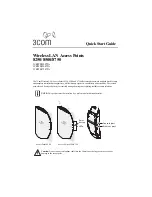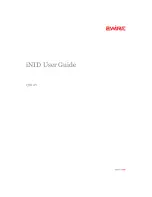
P-660R-Tx v3 Series Support Notes
12
All contents copyright © 2008 ZyXEL Communications Corporation.
6. What do the parameters (PCR, SCR, and MBS) mean?
Traffic shaping parameters (
PCR, SCR, MBS
) can be set in Web Configurator,
Interface Setup,
Interface Setup -> Internet -> QoS
:
Peak Cell Rate (PCR):
The maximum bandwidth allocated to this connection.
The VC connection throughput is limited by PCR.
Sustainable Cell Rate (SCR):
The least guaranteed bandwidth of a VC.
When there are multi-VCs on the same line, the VC throughput is guaranteed
by SCR.
Maximum Burst Size(MBS):
The amount of cells transmitted through this
VC at the Peak Cell Rate before yielding to other VCs. Total bandwidth of the
line is dedicated to single VC if there is only one VC on the line. However, as
the other VC asking the bandwidth, the MBS defines the maximum number of
cells transmitted via this VC with Peak Cell rate before yielding to other VCs.
The P-660R-Tx v3 holds the parameters for shaping the traffic among its
virtual channels. If you do not need traffic shaping, please set SCR = 0, MBS =
0 and PCR as the maximum value according to the line rate (for example, 2.3
Mbps line rate will result PCR as 5424 cell/sec.)
7. What do the ATM QoS Types (CBR, UBR, VBR
,
rtVBR, nrtVBR)
mean?
Constant bit rate (CBR)
: An ATM bandwidth-allocation service that requires
the user to determine a fixed bandwidth requirement at the time the connection
is set up so that the data can be sent in a steady stream. CBR service is often
used when transmitting fixed-rate uncompressed video.
Unspecified bit rate (UBR)
: An ATM bandwidth-allocation service that does
not guarantee any throughput levels and uses only available bandwidth. UBR
is often used when transmitting data that can tolerate delays, such as e-mail.
Variable bit rate (VBR)
: An ATM bandwidth-allocation service that allows
users to specify a throughput capacity (i.e., a peak rate) and a sustained rate
but data is not sent evenly. You can select VBR for burst traffic and bandwidth
sharing with other applications. It contains two subclasses:
Non-real time variable bit rate (nrtVBR)
and
Real time variable bit rate
(rtVBR).













































